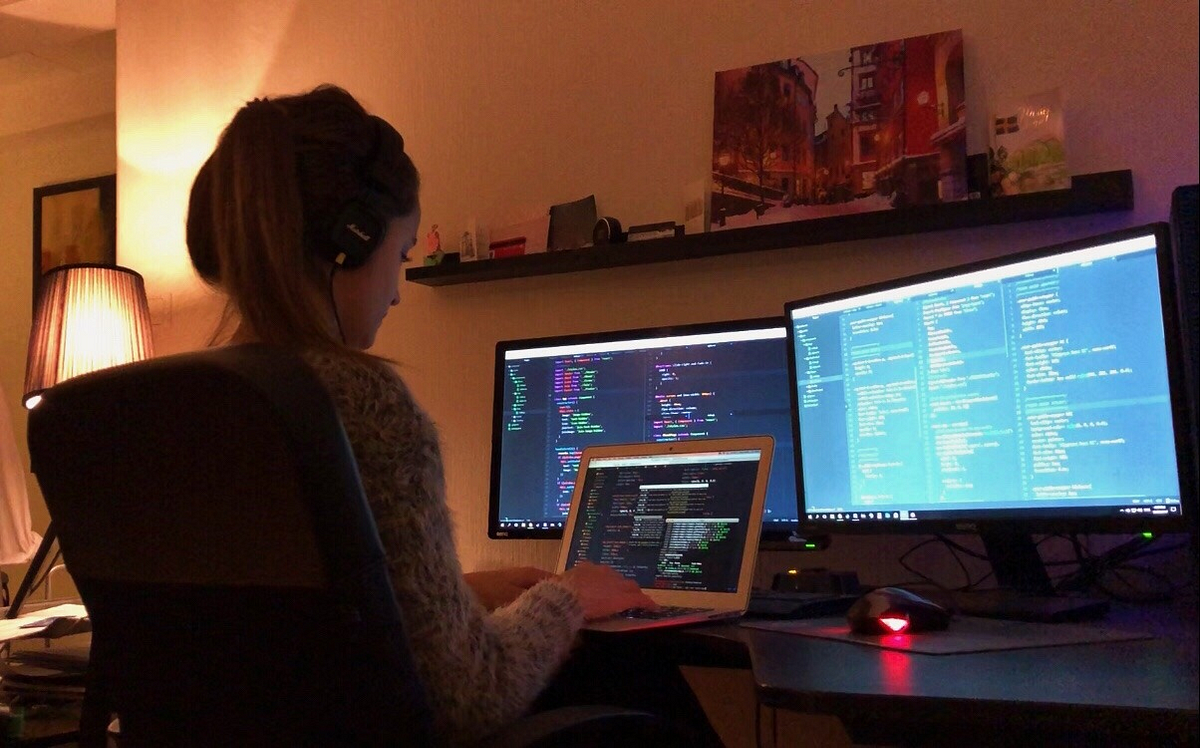Hire Dedicated Developers to Accelerate Your Software Development Timeline
Hire Dedicated Developers to Accelerate Your Software Development Timeline
Blog Article
Devoted Developers vs. In-House Teams: Which Is Right for You?
The decision between utilizing dedicated developers and keeping an internal team is a significant one that can influence the trajectory of your jobs and total service method. Committed programmers give a degree of flexibility and specialized competence that can be beneficial for specific, temporary initiatives. Conversely, internal teams add to a cohesive company society and a nuanced understanding of long-term objectives. By taking a look at vital elements such as budget plan, project range, and desired control, you can much better identify which strategy lines up with your business needs. The ramifications of this choice prolong past immediate results-- consider the wider influence on your company landscape.
Comprehending Committed Developers
The expanding demand for specialized skills in the technology industry has resulted in the appearance of dedicated developers as a practical option for several companies. These professionals are usually gotten on a task basis, permitting firms to leverage specific competence without the long-lasting commitment connected with permanent hires. Committed programmers are often embedded within a customer's group, giving adaptability and scalability to fulfill task requirements.
This version allows companies to access a worldwide skill swimming pool, which is specifically advantageous in a quickly progressing technical landscape. Devoted designers can be sourced from different geographical locations, ensuring that companies can find the right ability at affordable rates. They typically bring a wealth of experience and expertise, having worked with diverse jobs throughout various markets.
Furthermore, dedicated developers can concentrate solely on the tasks handy, boosting efficiency and efficiency. They are equipped to integrate seamlessly right into existing process, collaborating very closely with in-house groups to accomplish project purposes. This method not just minimizes the burden of recruitment and training yet likewise enables companies to stay agile, adjusting quickly to transforming market demands and technical developments.
Benefits of In-House Teams

Moreover, in-house teams tend to have a deeper understanding of the firm's mission, values, and objectives. This alignment can improve staff member interaction and motivation, as staff member feel much more connected to their work and the company's success. In addition, having a dedicated internal group enables for much better positioning of objectives and strategies, as these participants are continually concentrated on the business's priorities.
Internal teams also facilitate quicker decision-making procedures, as they can react a lot more quickly to changes and challenges. The well-known partnerships and experience with company procedures enable streamlined process and decreased miscommunication. Ultimately, the mix of a cohesive culture, placement with organizational goals, and reliable communication makes internal teams a valuable property for lots of organizations, particularly those aiming to cultivate browse this site lasting growth and innovation.
Price Considerations
When evaluating price considerations, both committed designers and in-house groups present distinctive monetary effects for organizations. Involving devoted programmers normally involves a pay-per-project or hourly price model, which can be economical for businesses with changing task demands. This technique enables versatility in scaling sources up or down, ensuring that business just spend for the services they need.
In comparison, internal groups entail taken care of prices, including incomes, advantages, and overhead expenditures such as workplace and tools. While this model provides higher control and prompt availability of resources, it may lead to higher long-lasting expenses, especially if the work does not validate a permanent staff.
Furthermore, business ought to think about the covert expenses connected with recruitment and training of internal staff members, which can better stress spending plans. Sometimes, the time and resources spent on managing an in-house team can diminish the organization's core business purposes.

Task Monitoring and Versatility
Project administration and versatility are crucial variables that influence the option between dedicated designers and internal teams. Dedicated designers generally use a high level of versatility, permitting companies to scale resources up or down based upon task demands. This agility can be especially useful for companies experiencing changing work or those seeking to innovate quickly. Committed groups frequently have actually developed procedures for managing projects successfully, over at this website leveraging details methodologies like Agile or Scrum, which assist in repetitive progression and flexibility.

Ultimately, the selection between internal teams and specialized programmers rests on the preferred degree of flexibility and the certain task management demands. Firms must examine their functional dynamics, project complexity, and source schedule to determine which option lines up finest with their critical objectives.
Making the Right Choice
Picking the appropriate growth technique-- in-house teams or committed programmers-- needs a careful analysis of different aspects that align with a company's critical objectives. Conversely, internal teams can provide far better continuity and integration with existing employees.
Next, evaluate your budget plan. Dedicated programmers commonly present a cost-effective remedy for short-term tasks, while in-house groups may sustain higher long-lasting expenses because of salaries, benefits, and expenses costs. Examine the level of control and partnership desired; in-house groups normally foster stronger interaction and alignment with firm culture.
In addition, consider the moment frame. If instant outcomes are necessary, specialized designers can be onboarded rapidly, whereas constructing an internal team requires time for recruitment and training. Consider the lasting vision of your organization. If constant growth is vital, buying an internal team may produce better returns in time. Eventually, the choice pivots on an extensive evaluation of these variables, ensuring alignment with your business's functional demands and total purposes.
Final Thought
In final thought, the decision between internal groups and specialized programmers rests on job requirements and business goals. Dedicated programmers offer flexibility and customized expertise, making them ideal for temporary initiatives. Alternatively, internal groups grow a cohesive society and deeper placement with long-term objectives. Cautious assessment of spending plan restrictions, project timelines, and preferred control levels is necessary for identifying one of the most proper approach, making sure alignment with calculated priorities and operational performance.
The website company decision between making use of dedicated designers and preserving an internal group is a significant one that can impact the trajectory of your tasks and total company method.Task management and flexibility are important variables that influence the option between specialized programmers and in-house teams. software development staff augmentation.In contrast, in-house teams may excel in maintaining a consistent project management framework due to their familiarity with the organization's society and lasting objectives. Committed programmers usually offer a cost-efficient remedy for temporary tasks, while internal teams may sustain greater long-lasting costs due to salaries, advantages, and expenses prices.In verdict, the decision between committed developers and in-house teams hinges on task needs and business objectives
Report this page